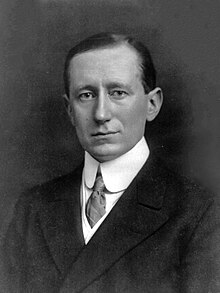Portal:Telecommunication
The Telecommunication Portal

Telecommunication, often used in its plural form or abbreviated as telecom, is the transmission of information with an immediacy comparable to face-to-face communication. As such, slow communications technologies like postal mail and pneumatic tubes are excluded from the definition. Many transmission media have been used for telecommunications throughout history, from smoke signals, beacons, semaphore telegraphs, signal flags, and optical heliographs to wires and empty space made to carry electromagnetic signals. These paths of transmission may be divided into communication channels for multiplexing, allowing for a single medium to transmit several concurrent communication sessions. Several methods of long-distance communication before the modern era used sounds like coded drumbeats, the blowing of horns, and whistles. Long-distance technologies invented during the 20th and 21st centuries generally use electric power, and include the telegraph, telephone, television, and radio.
Early telecommunication networks used metal wires as the medium for transmitting signals. These networks were used for telegraphy and telephony for many decades. In the first decade of the 20th century, a revolution in wireless communication began with breakthroughs including those made in radio communications by Guglielmo Marconi, who won the 1909 Nobel Prize in Physics. Other early pioneers in electrical and electronic telecommunications include co-inventors of the telegraph Charles Wheatstone and Samuel Morse, numerous inventors and developers of the telephone including Antonio Meucci and Alexander Graham Bell, inventors of radio Edwin Armstrong and Lee de Forest, as well as inventors of television like Vladimir K. Zworykin, John Logie Baird and Philo Farnsworth.
Since the 1960s, the proliferation of digital technologies has meant that voice communications have gradually been supplemented by data. The physical limitations of metallic media prompted the development of optical fibre. The Internet, a technology independent of any given medium, has provided global access to services for individual users and further reduced location and time limitations on communications. (Full article...)
Selected article -

In telecommunications, orthogonal frequency-division multiplexing (OFDM) is a type of digital transmission used in digital modulation for encoding digital (binary) data on multiple carrier frequencies. OFDM has developed into a popular scheme for wideband digital communication, used in applications such as digital television and audio broadcasting, DSL internet access, wireless networks, power line networks, and 4G/5G mobile communications.
OFDM is a frequency-division multiplexing (FDM) scheme that was introduced by Robert W. Chang of Bell Labs in 1966. In OFDM, the incoming bitstream representing the data to be sent is divided into multiple streams. Multiple closely spaced orthogonal subcarrier signals with overlapping spectra are transmitted, with each carrier modulated with bits from the incoming stream so multiple bits are being transmitted in parallel. Demodulation is based on fast Fourier transform algorithms. OFDM was improved by Weinstein and Ebert in 1971 with the introduction of a guard interval, providing better orthogonality in transmission channels affected by multipath propagation. Each subcarrier (signal) is modulated with a conventional modulation scheme (such as quadrature amplitude modulation or phase-shift keying) at a low symbol rate. This maintains total data rates similar to conventional single-carrier modulation schemes in the same bandwidth. (Full article...)General images
Things to do
 |
Here are some tasks awaiting attention:
|
Selected biography -
Guglielmo Giovanni Maria Marconi, 1st Marquis of Marconi GCVO FRSA (Italian: [ɡuʎˈʎɛlmo marˈkoːni]; 25 April 1874 – 20 July 1937) was an Italian inventor, electrical engineer, physicist, and politician, known for his creation of a practical radio wave–based wireless telegraph system. This led to Marconi being credited as the inventor of radio, and winning the 1909 Nobel Prize in Physics with Karl Ferdinand Braun "in recognition of their contributions to the development of wireless telegraphy". His work laid the foundation for the development of radio, television, and all modern wireless communication systems.
Marconi was also an entrepreneur, businessman, and founder of The Wireless Telegraph & Signal Company in the United Kingdom in 1897 (which became the Marconi Company). In 1929, Marconi was ennobled as a Marchese (marquis) by King Victor Emmanuel III of Italy, and, in 1931, he set up Vatican Radio for Pope Pius XI. (Full article...)Did you know (auto-generated) -

- ... that a Catholic radio station in Texas airs religious talk shows, the Mass—and weekly broadcasts of high school football?
- ... that before pursuing a career in music, Lauren Jenkins was the host of a wrestling television show?
- ... that an Alabama radio station was described by its program director as a "no-format mess"?
- ... that a complaint over an allegedly illegal transmitter move led to Texas radio station KFQX-FM being forced off the air for four hours in 1988?
- ... that the telephone exchange in Craig's Court contains one of the entrances to the secret government tunnels under London?
- ... that in Jackson, Tennessee, there was a 50–50 chance a reference to Dixie was about a radio station?
Related portals
Topics
Subcategories
Associated Wikimedia
The following Wikimedia Foundation sister projects provide more on this subject:
-
Commons
Free media repository -
Wikibooks
Free textbooks and manuals -
Wikidata
Free knowledge base -
Wikinews
Free-content news -
Wikiquote
Collection of quotations -
Wikisource
Free-content library -
Wikiversity
Free learning tools -
Wiktionary
Dictionary and thesaurus



























































































